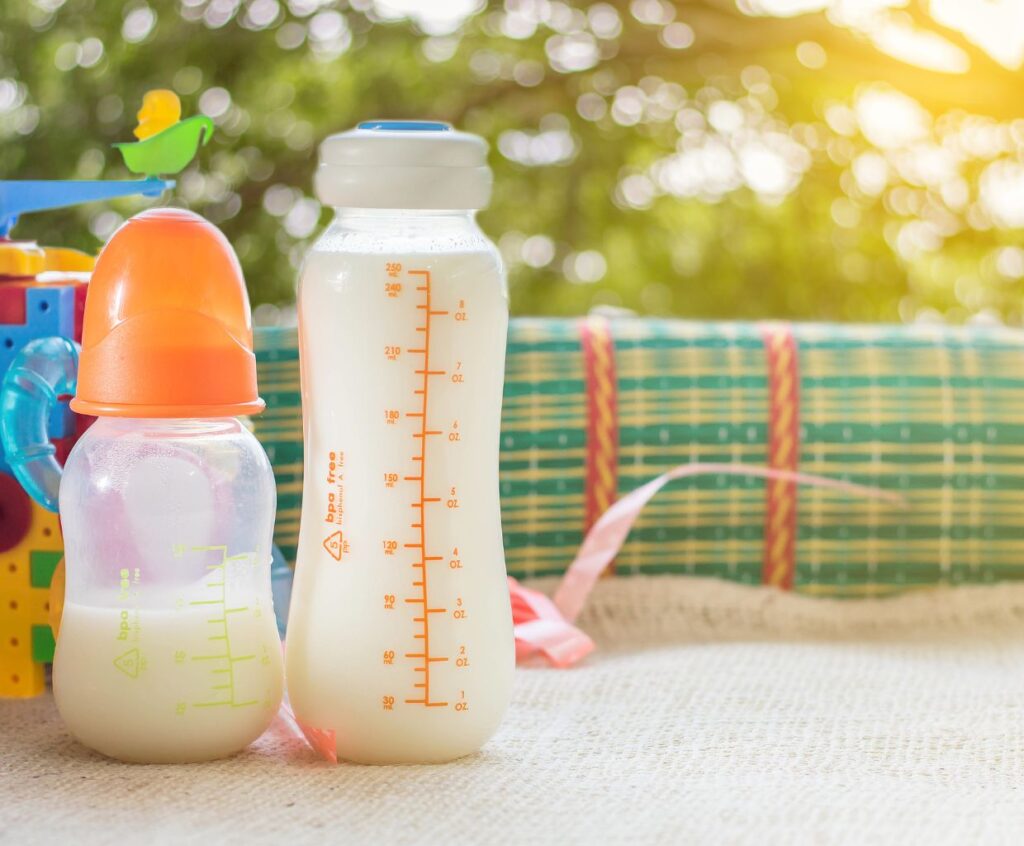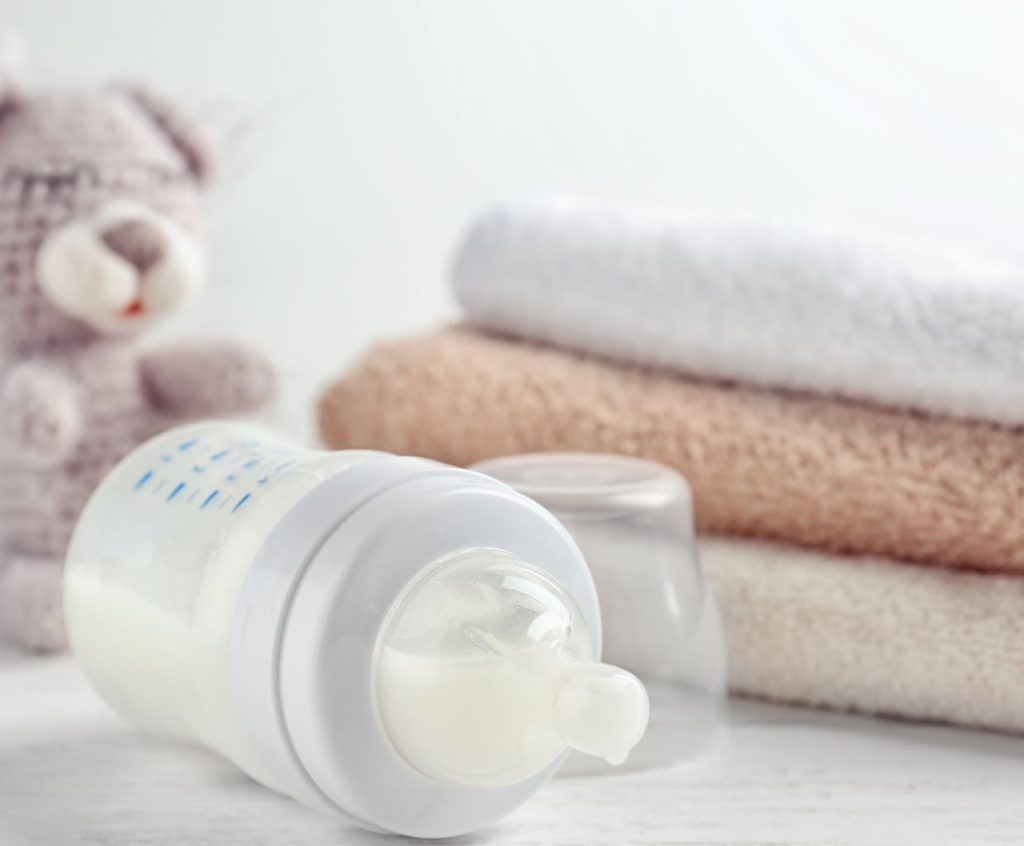How To Warm Bottles On The Go?
Being on the go with a baby can be challenging, especially when feeding them. One of the common dilemmas parents face is how to warm bottles while traveling or when away from home. In this article, we will explore some convenient methods and tips to ensure your little one’s bottle is warm and ready whenever they need it.
1. Use a Portable Bottle Warmer
If you frequently need to warm bottles while on the go, investing in a portable bottle warmer can be a game-changer. These compact devices are designed to heat bottles quickly and efficiently without electricity. Plug them into your car’s adapter or use a rechargeable battery, and you’ll have a warm bottle in no time.
2. Utilize Hot Water
Hot water can be a reliable alternative if you don’t have access to a portable bottle or warmer. Here’s how you can use it:
-
- Fill a thermos with hot water before leaving home.
-
- When it’s time to warm the bottle, pour some hot water into a bowl or sink.
-
- Place the bottle in the bowl or sink, ensuring the water level reaches about halfway up the bottle.
-
- Let the bottle sit in the hot water for a few minutes, gently swirling it occasionally to ensure even heating.
-
- Test the temperature of the milk or formula on your wrist before feeding it to your baby.
3. Use Insulated Bottle Bags
Insulated bottle bags are a practical solution for keeping bottles warm while on the go. These bags are designed to maintain the bottle’s temperature for an extended period. Before leaving home, warm the bottle and place it in the insulated bag. It will stay warm for hours, allowing you to feed your baby wherever you are.
Are there any portable bottle warmers or accessories specifically designed to heat bottles while moving?
Yes, portable bottle warmers and accessories are available specifically designed for heating bottles while on the move. Here are a few examples:
1. Portable Bottle Warmers:
There are various types of portable bottle warmers available in the market. These compact, lightweight devices heat the bottle with battery power or a USB connection. Some popular brands include Tommee Tippee Travel Bottle and Food Warmer, Munchkin Travel Bottle Warmer, and Kiinde Kozii Voyager Travel Bottle Warmer.
2. Insulated Bottle Bags:
Insulated bottle bags are designed to keep bottles warm for an extended period while on the move. These bags have particular insulation layers that retain the heat of the bottle. They are convenient for outings and trips, ensuring the bottle remains warm until it’s time to feed the baby—brands like Skip Hop, J.L. Childress, and Dr. Brown offer insulated bottle bags.
3. Car Bottle Warmers:
Car bottle warmers are designed to be used in vehicles. These warmers can be plugged into the car’s cigarette lighter socket and use the car’s power to heat the bottle. Some popular options include the Munchkin Travel Car Baby Bottle Warmer and the Philips Avent Car Bottle Warmer.
4. Thermally Insulated Bottle Holders:
Thermally insulated bottle holders are similar to insulated bottle bags but are designed to fit specific bottle sizes. They are often made of neoprene or other insulating materials and help retain the bottle’s temperature while moving. These holders are convenient for attaching to strollers or diaper bags. Brands like JJ Cole, Babymoov, and BUILT offer thermally insulated bottle holders.
These are just a few examples, and many other portable bottle warmers and accessories are available in the market, each with its features and specifications. It’s always recommended to research and read reviews to find the one that suits your specific needs.
How can I ensure that the bottle is warmed to the ideal temperature without overheating it when I don’t have access to a traditional bottle warmer?
Here are a few methods you can use to warm a bottle to the ideal temperature without a traditional bottle warmer:
1. Warm water bath:
Fill a bowl or sink with warm water. Place the bottle in the water and let it sit for a few minutes until it reaches the desired temperature. Make sure to check the temperature to avoid overheating periodically.
2. Running water:
Hold the bottle under warm running water, rotating it to ensure even heating. Again, check the temperature regularly to prevent overheating.
3. Thermos or insulated container:
Pour hot water into a thermos or insulated container. Place the bottle inside and let it sit for a few minutes, checking the temperature intermittently.
4. Heating pad or hot towel:
Wrap a heating pad or a hot towel around the bottle and let it sit for a few minutes until it warms up. Ensure that the temperature is suitable before feeding.
Remember to always test the temperature of the milk or formula on your wrist or the back of your hand before giving it to your baby. It should feel lukewarm, not too hot or too cold.
Are there any safety considerations or guidelines to remember when warming bottles on the go, especially in different environments or when using unfamiliar equipment?
When warming bottles on the go, especially in different environments or using unfamiliar equipment, there are a few safety considerations and guidelines to keep in mind:
1. Use a bottle warmer or warm water: Avoid using microwaves or stovetops to warm bottles on the go, as they can heat the milk unevenly and create hot spots. Instead, use a bottle warmer designed for travel or warm water to ensure a more controlled and even heating process.
2. Check the temperature: Always test the temperature of the milk before feeding it to your baby. Shake a few drops onto the inside of your wrist to make sure it is comfortably warm but not too hot. This helps prevent burning your baby’s mouth.
3. Inspect equipment and surroundings: When using unfamiliar equipment, such as a bottle warmer provided by a hotel or restaurant, inspect it for any signs of damage or malfunction before using it. Additionally, ensure the area around the equipment is clean and free from any potential hazards.
4. Be cautious with boiling water: When using warm water to heat the bottle, be cautious when handling boiling water. Avoid spills, and ensure the water is hot before placing the bottle.
5. Use a protective cover: Consider using a bottle cover or insulated wrap to help maintain the temperature of the warmed bottle while on the go. This can also protect against accidental spills or leaks.
6. Plan: Bring pre-measured formula or expressed breast milk in a cooler bag with ice packs if you know you need to warm bottles while on the go. This can help maintain the milk’s freshness and reduce the time needed for warming.
Remember, it is always important to prioritize your baby’s safety and follow any specific guidelines provided by the manufacturer of the bottle warmer or equipment you use.
How To Warm Bottles On The Go – Conclusion
Warming bottles on the go doesn’t have to be a hassle. By utilizing portable bottle warmers, hot water, or insulated bottle bags, you can ensure your baby’s bottle is warm and ready whenever they need it.
Always test the temperature before feeding your little one to prevent burns or discomfort. Happy travels!


